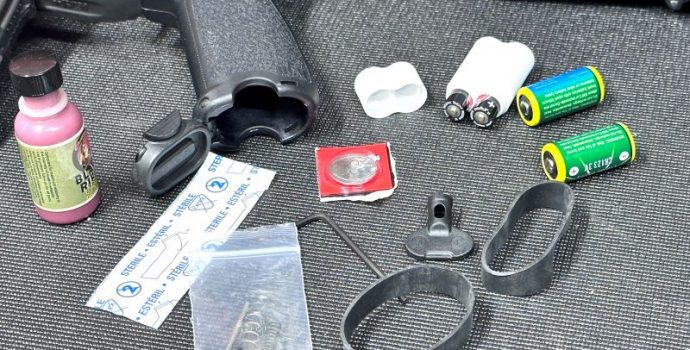Survival & Prepping

Top 3 Good Guys with Guns (and Why Their Stories Matter)
Good guys with guns stop more incidents than the mainstream media would have you believe. Here are three heroes who rose to the challenge.

AR-15 Pistol Grip Storage: What to pack?
Before deciding what to store in the pistol grip, first decide what you will be doing with that rifle. Some people have one multi-purpose AR-15 and some have multiple. If you have “fun guns” for the range and a designated gun for self-defense, this could change what you store in each one.

How to Stay Safe on Halloween This Year
Halloween tends to be a time when bad people can carry out their intentions. Let's discuss how to have fun and stay safe this Halloween.

Uses for Non-NFA Short-Barreled Scatterguns and AOWs
As defined in the National Firearms Act, a shotgun is a shoulder-fired weapon. But what about those shorty "shotguns" without a stock? Do they serve a purpose?

Building Your Survival Battery
The world has changed a lot since I started my survivalist journey, and some would say not necessarily for the better. Long ago and far away in the middle of the Cold War, our biggest worry was nuclear Armageddon and the possibility of seeing Russian troops on US soil. Most of us believed that those […]

A Beginner’s Guide to Making an EDC Pouch
An EDC pouch filled with basic supplies could help solve thousands of issues. This makes it a perfect item to carry, and it's insanely easy to put together.

Live The Creed’s Responder IFAK: Essential Kit
You need an IFAK. More than one, really. Live The Creed first aid kits take the guess work out of the gear and make everything you need in an emergency easy to access.

Emergency Preparation: Apocalyptic Myths of Hollywood
Hollywood is in the entertainment business. They often tell a great story, but they're often choc-full of inaccuracies and creative liberties. Be sure to steer clear of Hollywood when developing a plan for the apocalypse — whatever it may be.

Reload Your Own Ammo… If You Want To Be a Good Shot!
Reloading your own ammo offers plenty of benefits, not the least of which is that you'll have more ammo to train with. Try reloading your own ammo. You just might find it as addictive as I do.

Emergency Preparation: How Will the END Come?
The end of civilization is a common trope in science fiction, but what are the real threats to our society and how would The End likely come about?

